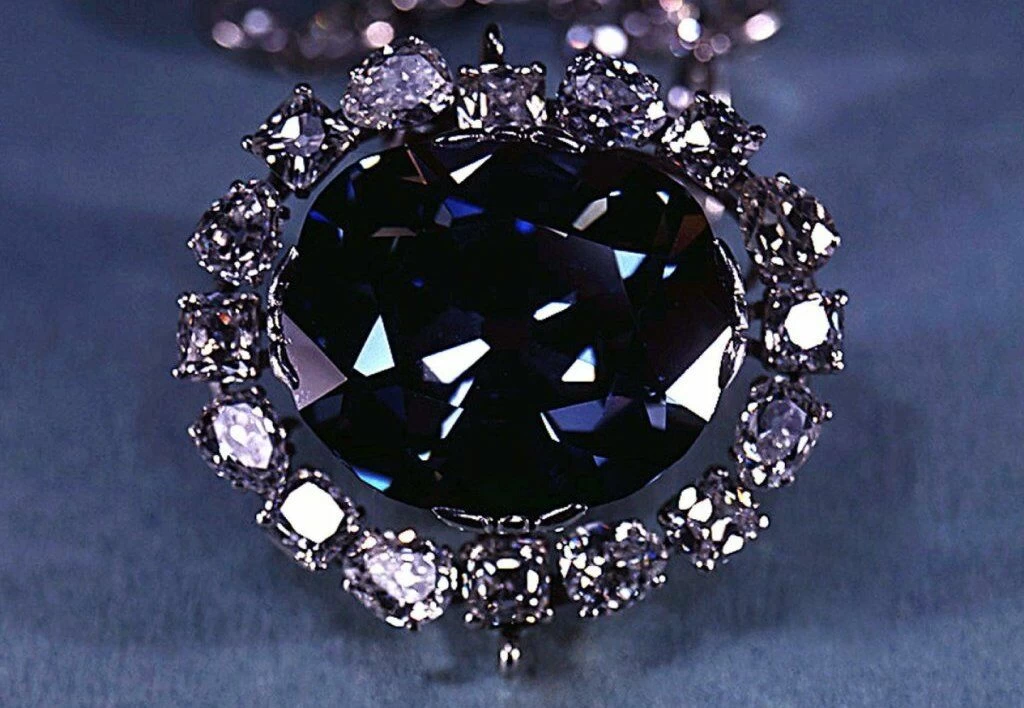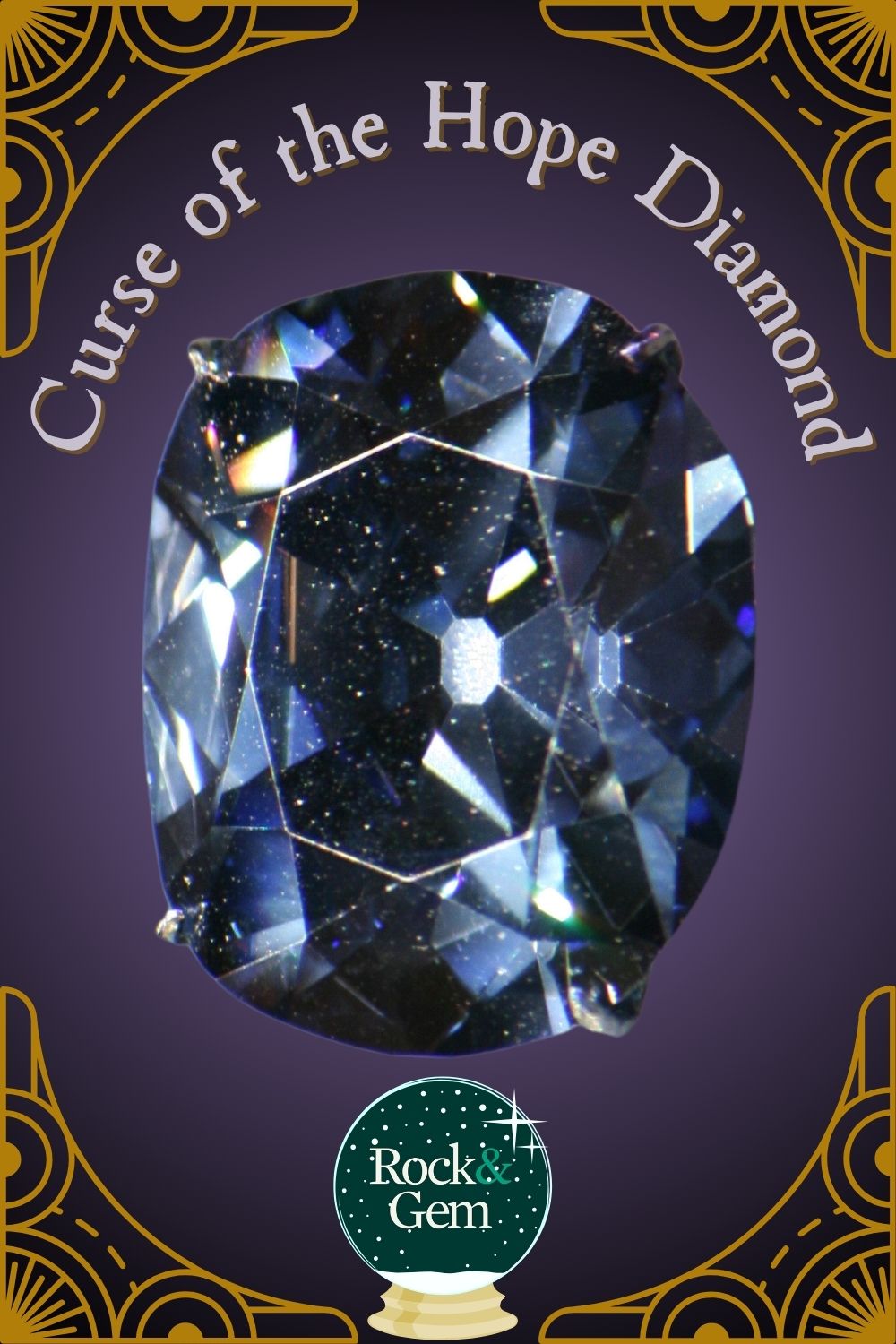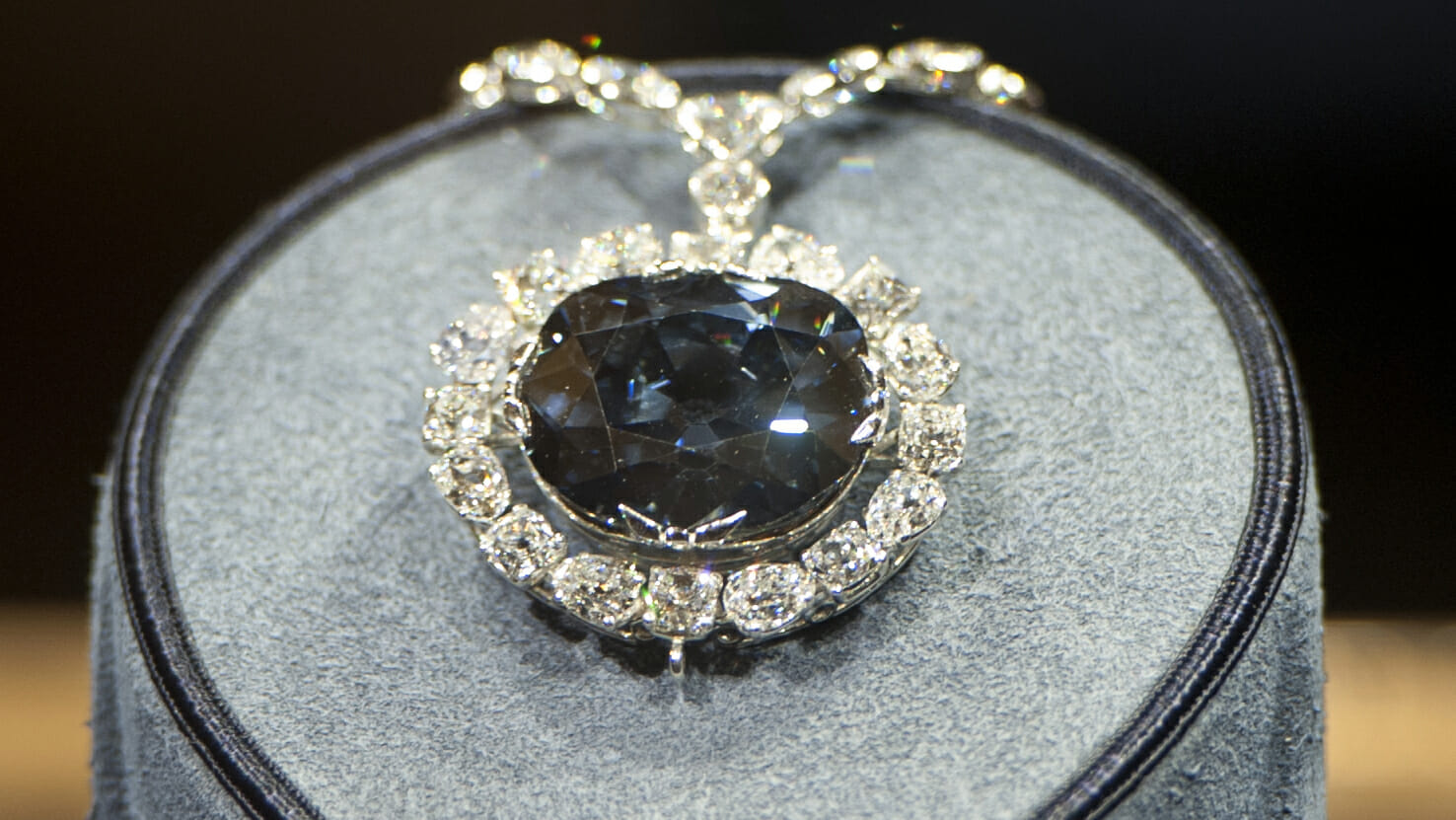
The Azure Whisper of Doom: Unraveling the Enduring Curse of the Hope Diamond
It shimmers with an ethereal, deep blue, a colour so captivating it seems to draw light into its very core. Weighing 45.52 carats, the Hope Diamond is undeniably one of the world’s most magnificent and recognizable jewels. Yet, its brilliance is perpetually overshadowed by a chilling whisper of doom – a persistent legend claiming that the diamond carries a malevolent curse, bringing misfortune, madness, and violent death to all who dare to own it. From kings to socialites, the narrative of its owners is punctuated by a series of misfortunes so stark that even the most hardened skeptic might pause.
More than just a gem, the Hope Diamond is a repository of history, a silent witness to the rise and fall of empires, the extravagance of royalty, and the tragic fates of individuals. Its journey spans continents and centuries, from the ancient mines of India to the opulent courts of France, through the hands of wealthy European families and American magnates, before finally resting in the protective embrace of the Smithsonian National Museum of Natural History. But is the curse a genuine supernatural force, a tragic string of coincidences, or a masterstroke of marketing that has cemented the diamond’s legendary status?
From Indian Earth to Royal Splendour: The Genesis of a Legend

The story of the Hope Diamond begins not in a Parisian salon, but deep within the ancient Kollur Mine in the Golconda region of India, likely in the 17th century. Here, a gargantuan blue diamond, weighing an estimated 112 carats in its rough state, was unearthed. This original stone, known as the Tavernier Blue, after the French merchant Jean-Baptiste Tavernier who acquired it during his travels in the 1660s, was brought to Europe.
Tavernier, a seasoned traveller and shrewd businessman, sold the magnificent gem to King Louis XIV of France in 1668. The Sun King, known for his extravagant tastes and love for all things splendid, had the diamond re-cut into a heart-shaped, 67.125-carat stone known as the French Blue, or the Blue Diamond of the Crown. It became a prominent feature of the French Crown Jewels, symbolizing the unparalleled power and wealth of the Bourbon monarchy.
For over a century, the French Blue adorned the necks of kings and queens, seemingly bestowing only good fortune upon its royal wearers. Louis XIV died peacefully in his bed, albeit after a long reign. His successor, Louis XV, commissioned a magnificent jewelled pendant, the Golden Fleece, for the diamond, and also enjoyed a prosperous reign. However, it was during the tumultuous reign of Louis XVI and his ill-fated queen, Marie Antoinette, that the first tendrils of the curse began to entwine themselves around the diamond’s narrative.
The French Revolution and the Birth of the Curse
The French Revolution, a cataclysmic upheaval that redefined the course of European history, would prove to be the crucible in which the Hope Diamond’s curse was forged. As the monarchy crumbled and the royal family was imprisoned, the French Blue remained among the Crown Jewels in the Garde-Meuble (royal storehouse). In September 1792, during the chaotic days of the revolution, the jewels were stolen. The French Blue vanished, seemingly swallowed by the maelstrom of history.
Louis XVI and Marie Antoinette, of course, met their gruesome end at the guillotine in 1793. Their tragic fate, combined with the diamond’s disappearance, retrospectively became the cornerstone of the curse legend. Was it mere coincidence that the diamond, once a symbol of royal power, was lost as the very institution it represented collapsed, and its owners faced execution? Or did the diamond itself carry a malevolent energy, a premonition of their doom? For many, the answer was clear. The curse had claimed its first, most prominent victims.
Rebirth and the Spreading Shadows
For over two decades, the French Blue remained lost. It wasn’t until 1839 that a deep blue diamond of 45.52 carats, strikingly similar in colour and clarity to the missing French Blue, resurfaced in the possession of the wealthy British banking family, Hope. It was clear that the original stone had been recut to avoid recognition and perhaps to remove the taint of its royal past. This new gem became known as the Hope Diamond, immortalizing its new owners.

While the Hope family did not suffer any immediate, dramatic misfortunes directly linked to the diamond, the legend of its curse began to solidify with subsequent owners. Early whispers recounted tales of financial ruin, suicide, and madness among various individuals who handled or owned the stone for brief periods. One supposed owner, Jacques Colet, reportedly committed suicide after stealing the diamond. Another, Prince Ivan Kanitovski, allegedly murdered his mistress and was then himself stabbed to death. These stories, though often lacking definitive historical proof, served to fuel the growing mystique.
The American Chapter: Evalyn Walsh McLean and the Curse’s Zenith
The Hope Diamond’s most dramatic and well-documented chapter unfolded in the early 20th century when it crossed the Atlantic to America. Its journey to the New World was orchestrated by the legendary French jeweler Pierre Cartier, a master of both gemology and narrative. Cartier, understanding the power of a compelling story, reportedly embellished the diamond’s cursed history when attempting to sell it to Evalyn Walsh McLean, a flamboyant and incredibly wealthy Washington socialite known for her love of lavish jewels and her rather superstitious nature.
McLean, despite being warned of the diamond’s supposed ill-fortune, was captivated by its allure. "I tempted fate, as I have done all my life," she reportedly declared. In 1911, she purchased the Hope Diamond from Cartier for an astonishing $180,000 (equivalent to several million dollars today). She often wore it with another famed cursed jewel, the Star of the East, a 94.8-carat pear-shaped diamond. She treated the Hope Diamond almost like a pet, letting her dogs wear it on their collars and carrying it in her purse.
However, the period of McLean’s ownership was marked by an almost unbelievable string of personal tragedies, which many attributed directly to the diamond’s curse. Her eldest son, Vinson, was killed in a car accident in 1919 at the age of nine. Her daughter, Evalyn Walsh McLean, committed suicide in 1946. Just a year later, another son, Edward, died of an overdose. Her husband, Edward Beale McLean, descended into mental illness and eventually died in a mental institution. Evalyn herself struggled with depression and addiction throughout her life, eventually dying in 1947.
"The Hope Diamond has brought me nothing but bad luck," McLean reportedly confided to friends, even as she continued to wear it. Her story became the definitive proof for many believers in the curse. Here was a woman of immense wealth and privilege, whose life was nevertheless ravaged by an almost unparalleled series of heart-wrenching losses, all while the magnificent blue diamond rested upon her neck.
Breaking the Spell: Harry Winston and the Smithsonian
Following Evalyn Walsh McLean’s death, her jewels were held in trust for her grandchildren. In 1949, the entire collection, including the Hope Diamond, was purchased by Harry Winston, the renowned New York jeweler. Winston, a savvy businessman and a passionate gemologist, understood the diamond’s unique history and its potential to captivate the public. He exhibited the Hope Diamond around the world for several years, raising money for charity and cementing its global fame.
However, Winston harboured no belief in the curse. Instead, he saw the diamond as a symbol of human ingenuity and geological wonder. In 1958, in an act of extraordinary public generosity, he donated the Hope Diamond to the Smithsonian National Museum of Natural History in Washington D.C. His rationale was simple: "I felt that the American people should have it."
The delivery of the Hope Diamond to the Smithsonian was, in itself, an iconic moment that subtly challenged the curse. Winston chose to send the priceless gem via registered mail, in a plain brown paper package, for the modest cost of $145.29, which included $1 million in insurance. The mail carrier, James Todd, who delivered the package, reportedly experienced a series of minor misfortunes shortly after, including a truck accident and a shattered leg. However, he also lived a long and healthy life, dying at the age of 87, providing a humorous footnote rather than a terrifying testament to the curse.
Coincidence, Marketing, or Malevolence? The Enduring Debate
Safely ensconced within the Smithsonian, the Hope Diamond has remained, seemingly free of its cursed reputation. Millions of visitors gaze upon its brilliance each year, yet no new tales of misfortune have emerged from its glass enclosure. This raises a fundamental question: was the curse ever real?
Skeptics argue that the "curse" is a classic example of post-hoc fallacy – the logical error of assuming that because one event follows another, the first caused the second. The diamond has been owned by a limited number of individuals, many of whom were already living lives of extreme privilege and exposure to risk. Kings and queens, especially during periods of political upheaval, faced inherent dangers. Wealthy socialites, living opulent and often reckless lifestyles, were also prone to accidents, illness, and personal struggles. Attributing these misfortunes to a diamond, rather than to the complexities of human existence, is a tempting but often flawed narrative.
Furthermore, the role of Pierre Cartier in crafting and promoting the curse cannot be overstated. Jewelers often employ storytelling to enhance the allure and value of their most prized possessions. A diamond with a dramatic, albeit tragic, history is far more compelling than one without. The curse, therefore, could be seen as a brilliant marketing strategy, a narrative device that elevated the Hope Diamond from a mere precious stone to an object of profound mystery and fascination.
Yet, for believers, the sheer density of misfortune surrounding the diamond’s owners, particularly Evalyn Walsh McLean, is too compelling to dismiss as mere coincidence. They point to the almost uncanny way tragedy seemed to stalk its possessors, suggesting a malevolent energy, perhaps absorbed from the earth, or imbued by the suffering of its early owners.
The Unending Allure
Today, the Hope Diamond remains the most visited object in the Smithsonian, attracting millions annually. Its scientific value is immense; it is a Type IIb diamond, meaning it contains boron impurities that give it its extraordinary blue colour and make it a semiconductor. But it is not its scientific properties that draw the crowds; it is the legend, the history, and the lingering question mark of the curse.
The Hope Diamond is more than just a gem; it is a cultural icon, a testament to the enduring power of myth and storytelling. Whether the curse is a genuine supernatural phenomenon, a series of unfortunate coincidences, or a clever marketing ploy, it has irrevocably woven itself into the fabric of the diamond’s identity. It reminds us that even objects of immense beauty can carry a darker narrative, prompting us to ponder the boundaries between fate and free will, and the profound impact of belief on human perception. As the azure light of the Hope Diamond continues to captivate, the whisper of its curse remains, an eternal, tantalizing enigma at the heart of one of the world’s most magnificent treasures.


